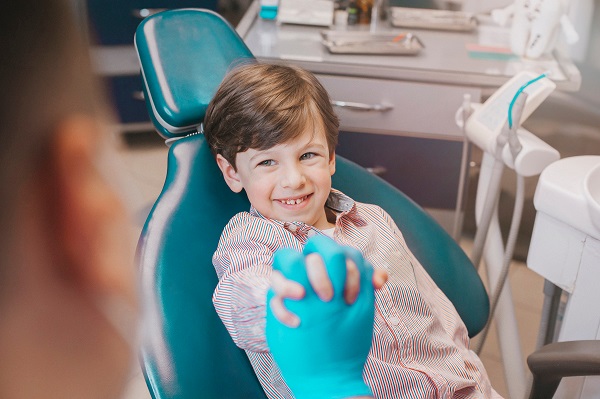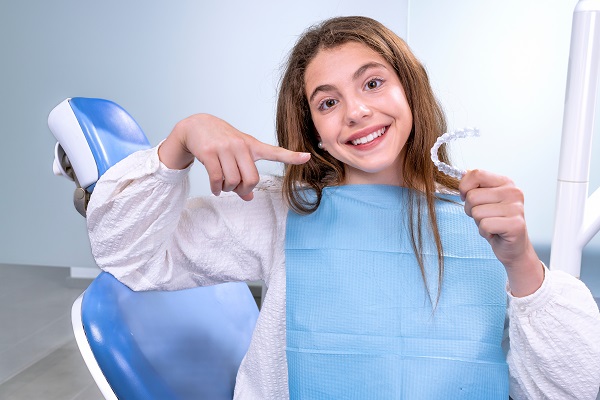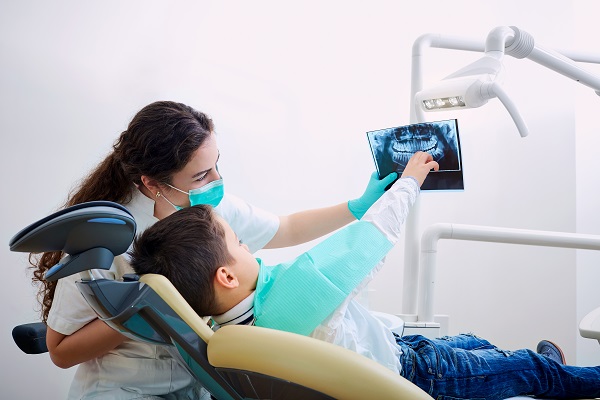What Happens if My Child Doesn’t Go to the Orthodontist?

Many parents believe evaluation and treatment by an orthodontist should not be scheduled until after a child has lost all of their baby teeth, usually in the preteen or early teenage years. In addition, some view orthodontics as a purely aesthetic treatment and often-desired but not truly necessary. However, most dental professionals recommend that parents bring their child in for an initial exam at a young age. Children and adults who do not see an orthodontist for evaluation and potential treatment are at risk for developing serious conditions beyond just a crooked set of teeth.
The importance of orthodontic evaluation in early childhood
The American Association of Orthodontists recommends that children who display the signs of future orthodontic issues be seen by the age of seven. This is much younger than many parents assume treatment should begin but can be vital in a young patient's treatment plan and outcome. Young children whose upper and/or lower jaw are not growing or shaping properly can utilize early intervention devices to help prevent the need for future surgeries.
For many patients, headgear worn at home can help with an underbite, while a retainer-like appliance called a bionator can help treat severe overbite in young children. These devices can also help permanent teeth grow in properly, making alignment treatments, such as braces or clear aligner trays, much easier in the future.
Risks of neglecting orthodontic treatment
There are several reasons parents should not dismiss orthodontic treatment for their children. While many of the negative side effects impact children immediately, other conditions can develop or worsen over time.
Unsightly teeth
A crooked smile can be unsightly and impact children for the rest of their lives. Poor alignment can negatively impact self-esteem, affecting social and professional relationships and opportunities. In addition, gaps caused by crooked teeth can continue to shift and worsen over time.
Improper bite formation
Poor alignment is either caused by or can often lead to improper bite formation. In these cases, the teeth have shifted and do not meet properly for effective biting and chewing. This issue can lead to more serious problems of the jaw down the road.
Jaw tension, pain or surgery
When crooked teeth or an improperly shaped jaw result in poor bite alignments, this can create tension and pain in the jaw. The condition may often worsen over time and could lead to the development of TMJ or other serious conditions. In some cases, surgery is needed to correct the problem and relieve chronic pain.
Conclusion
While most traditional orthodontic treatments do not begin until all baby teeth have fallen out, parents of children with orthodontic issues should not wait until this stage to seek initial evaluation. By seeing an orthodontist by age seven, the development of serious alignment issues can be prevented through early treatment. In addition, addressing the issues at a young age can help make future treatment with braces or other aligners more efficient and less invasive. No matter what the age of the patient, orthodontic treatment should not be neglected, as teeth alignment issues can lead to serious complications.
Request an appointment here: https://www.drsallysong.com or call The Orthodontic Center Of Wayne - Dr. Sally Song at (973) 696-5220 for an appointment in our Wayne office.
Check out what others are saying about our dental services on Yelp: Orthodontist in Wayne, NJ.
Recent Posts
Even though braces are common among teenagers, getting them is a new orthodontic experience for every patient. Teens and their parents tend to have many questions about braces and other orthodontic treatments for teens, when to get braces, and what having braces will be like. Here are some of the most common questions orthodontists hear…
The primary goal of early orthodontic treatment is to prevent and fix bite misalignments. Several causes, including genetics, the premature loss of primary (baby) teeth, and harmful oral habits (like thumb sucking) may lead to such anomalies. Orthodontic abnormalities might be congenital or occur during early childhood. Straight teeth can reduce the incidence of dental…
Invisalign® has changed how willing teenagers –– and everyone else –– are to start teeth straightening treatments. It provides an alternative to traditional metal braces that is virtually impossible to detect. Invisalign® treatments work the same way conventional braces work, the aligner trays exert a force on the patient's teeth pushing their teeth into better…
Oral health is foundational to good overall health. Through the help of an orthodontist and bite correction, difficulties with chewing or speaking can be overcome. The inability to ingest food or clearly articulate impacts both physical and mental health. Bite correction has the potential to change the course of an individual’s health and wellness.Changes in…


